The venture market in Asia is not immune to the decline in funding seen globally.
Venture funding in the continent declined to $36.3 billion in the first quarter, a 7 percent drop compared to the same quarter last year—and a much more dramatic 31 percent dip compared to the last quarter of 2021, according to Crunchbase data.
On one hand, the numbers are not shocking considering the decline in global and North America venture dollars. On the other, like most of the world, Asia is coming off a record year of venture funding of $174.4 billion last year.
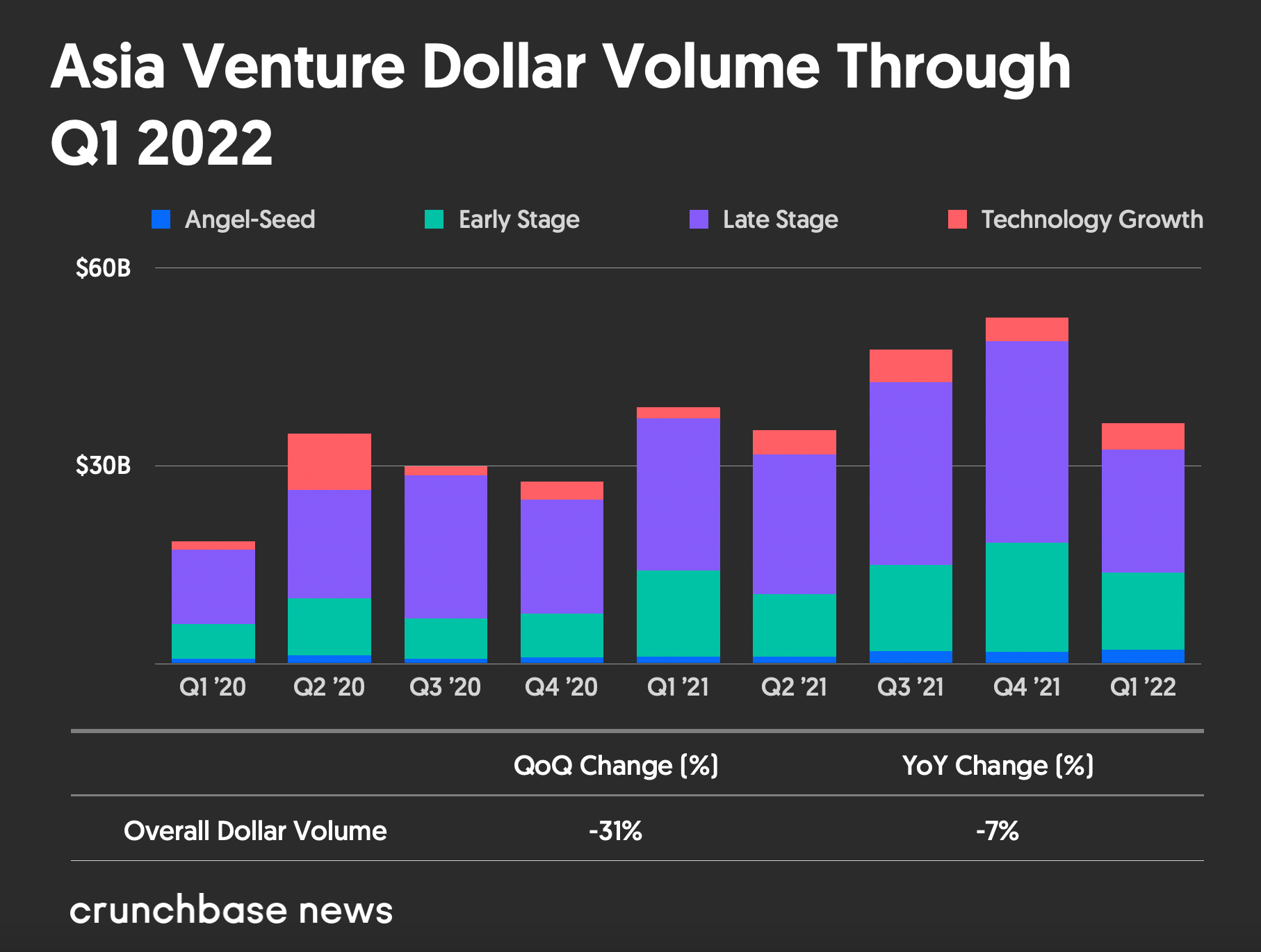
Deal flow also dropped off massively compared to the fourth quarter of 2021. The first quarter of this year only saw 1,709 deals announced, a 21 percent drop compared to the 2,153 deals that closed in Q4 last year.
Search less. Close more.
Grow your revenue with all-in-one prospecting solutions powered by the leader in private-company data.
Late-stage drops
The most significant decrease came in late-stage and technology-growth funding, which totaled only $22.5 billion in the first quarter—a drop of 34 percent from the $34.1 billion seen in the last quarter of 2021, and 9 percent compared to the first quarter of last year.
That drop in dollars makes up for the majority of decline Asia saw quarter to quarter. It also seems to illustrate the same investing thesis many venture and growth firms are said to be implementing, in which they are backing off expensive late rounds at high valuations and looking to invest money elsewhere.
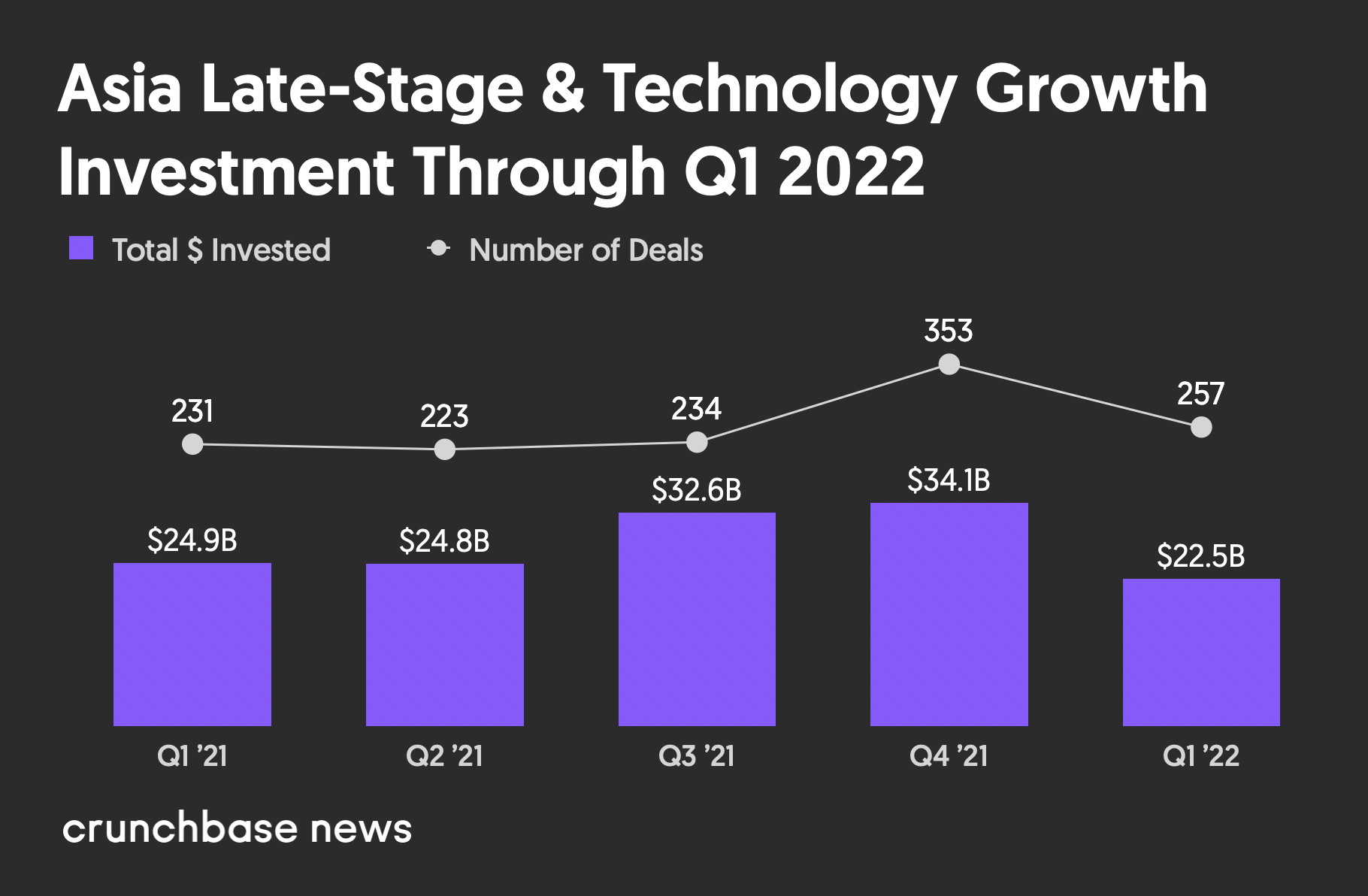
Late-stage and technology-growth deal count also was off significantly from last quarter. Only 257 late-stage deals were announced in Q1, a 27 percent drop from the 353 deals closed in 2021’s Q4. Although, that number of deals actually is an increase from the 231 closed in the same period last year.
Early stage dips
Funding to the early-stage rounds showed similar trends—with dollars being down, but deals actually being up compared to the same period last year.
Early-stage funding hit only $11.7 billion last quarter, down 29 percent from the $16.5 billion saw in Q4 2021 and a 10 percent decline year to year.
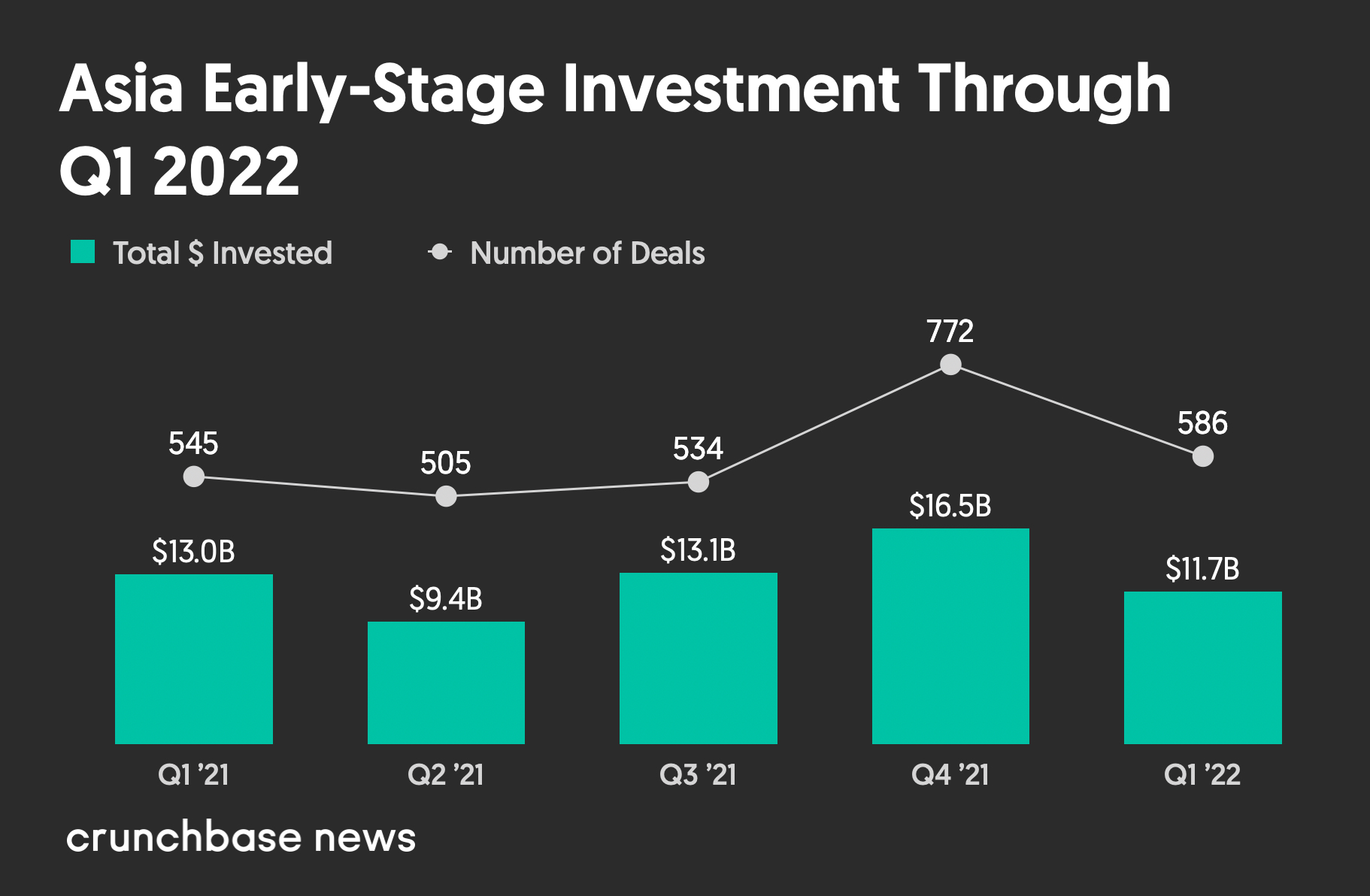
The first quarter saw 586 early-stage deals closed, a 24 percent drop from Q4, but an 8 percent increase from 2021’s first quarter.
Seed and angel dollars up, deal flow down
The earliest stage of funding—seed and angel—presented a somewhat mixed bag for Asia’s first quarter. The quarter saw more than $2 billion come into such rounds, a 13 percent increase from the fourth quarter, and a huge 87 percent uptick from the first quarter of 2021.
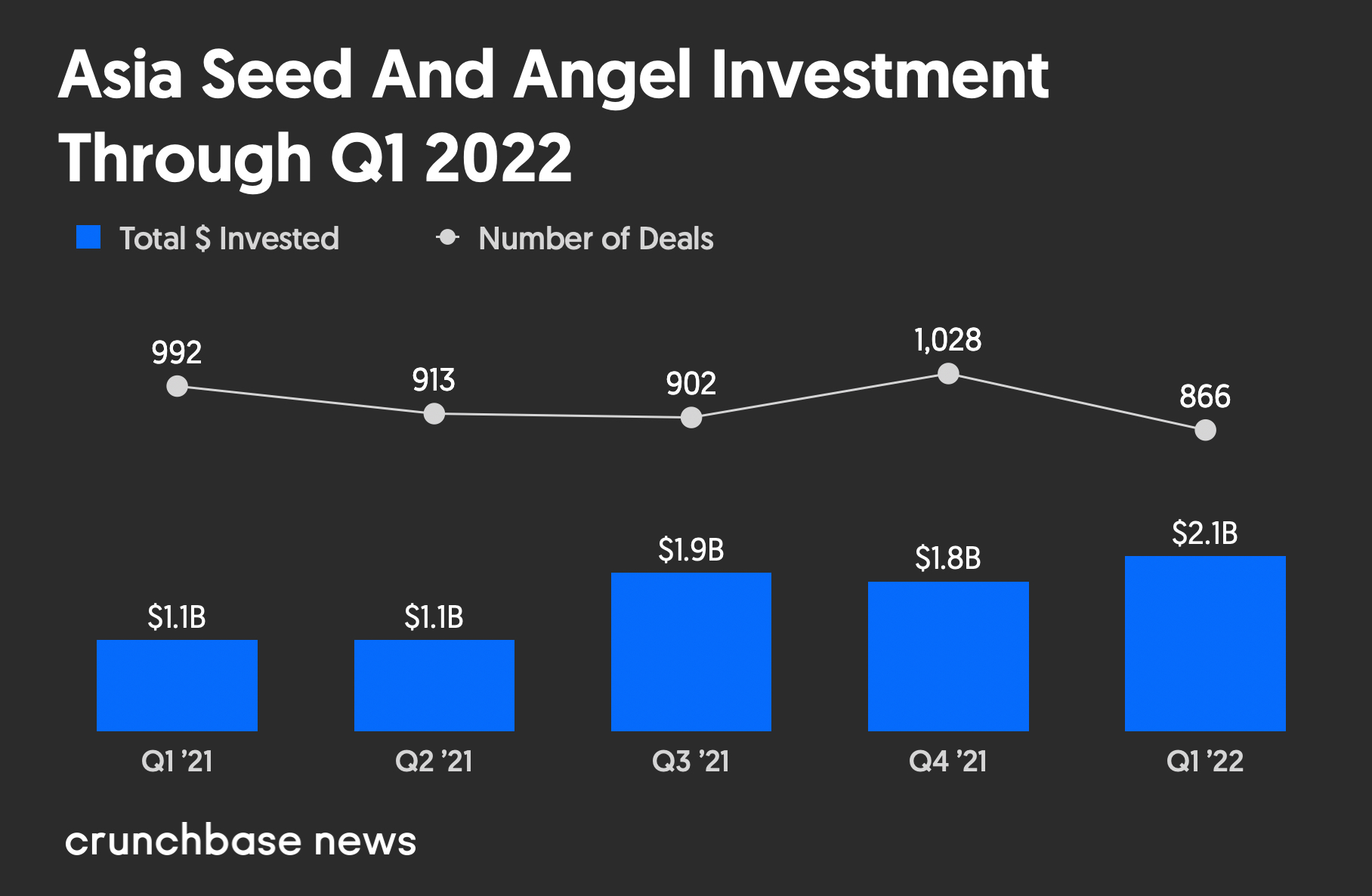
However, since those rounds represent the smallest dollar amounts, the increase wasn’t enough to really move the funding needle. Also, while dollar amounts were up, deals were down. The quarter recorded only 866 deals, down 16 percent from the 1,028 closed in the fourth quarter and down 13 percent year-to-year.
Who took the biggest hit?
With funding numbers being down, it is most logical to think Chinese startups bore the brunt of the pull-back—and that would be correct.
First-quarter venture funding in China came in at $13.6 billion—a 50 percent decline from Q4 2021 and a 46 percent drop year to year.
However, Q1 venture funding in India—the continent’s second biggest venture hub—was almost even with the fourth quarter at $10.8 billion. That amount also represents a 128 percent year-to-year increase, seemingly putting it on pace for another strong year.
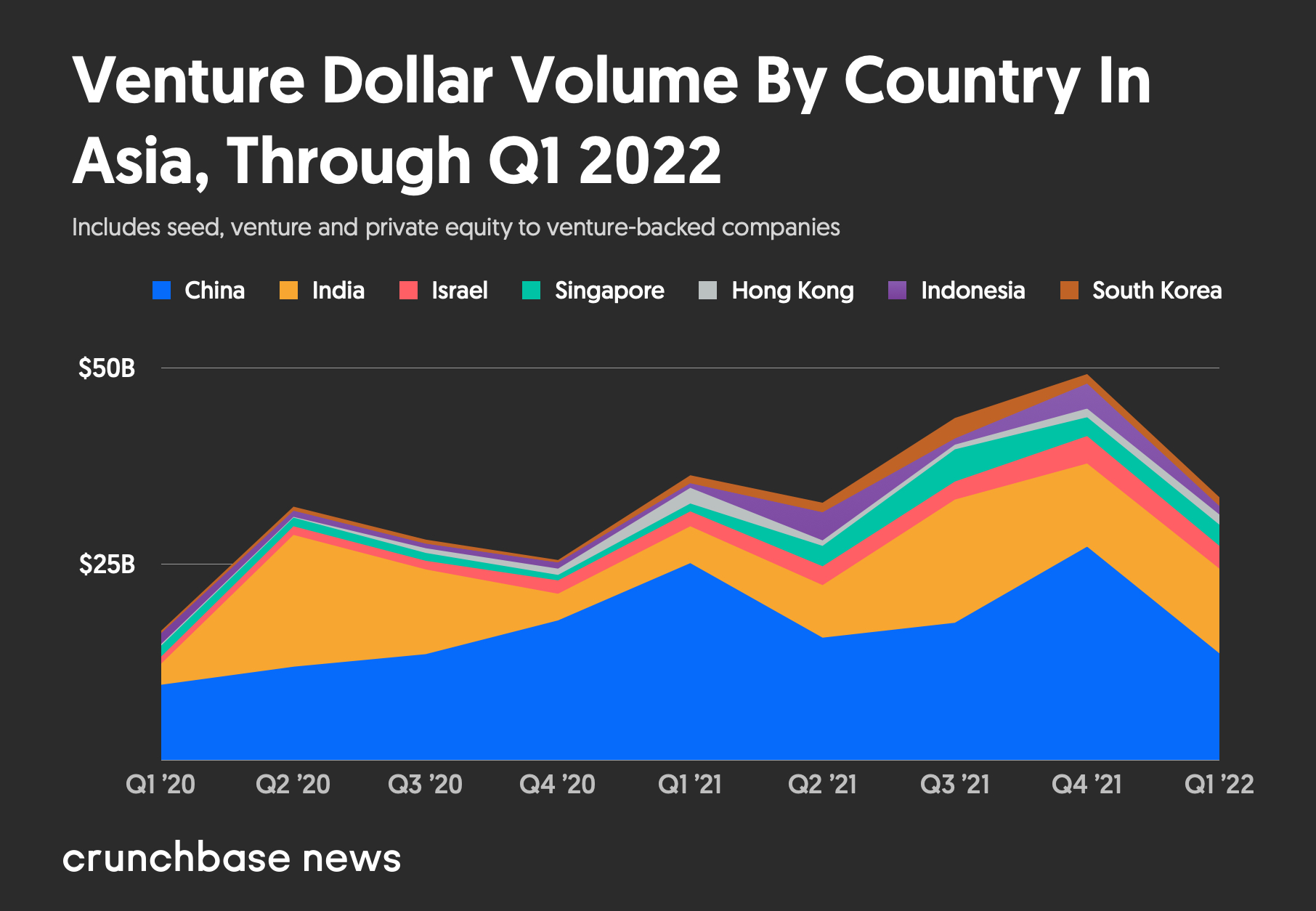
Exits
Along with falling funding totals, the Asia market also is following the North American trend of a slowing IPO pipeline. Less than a dozen VC-backed companies on the continent went public last quarter, compared to about three dozen in Q1 of last year.
That is not shocking, considering how regulations picked up—both in the U.S. and China—around Chinese companies listing on U.S. exchanges after ride-hailing titan Didi went public on the NYSE, only to delist months later when the Chinese government said it would investigate the company on suspicion it had violated data privacy and national security laws.
However, there were some noteworthy companies that went public in Asia in the first quarter including:
- China-based chipmaker ASR Microelectronics raised more than $1 billion in January.
- China-based biotech firm Remegen raised more than $400 million last month.
Mergers and acquisitions, however, did increase about 50 percent year to year, with about 90 deals announced in the first quarter. Some of the larger deals include:
- Zomato acquiring India-based online supermarket blinkit for $725 million.
- Stillfront Group bought Hong Kong-based game publisher 6Waves for $201million.
Takeaways
Much like how Asia followed the rise of venture funding in North America through the last year, it is seemingly slowing down just like the Western Hemisphere.
Asia faces many of the same headwinds the U.S. is currently facing—maybe even to a higher degree. The continent’s biggest venture market—China—is still dealing with a COVID crisis as the new omicron variant spreads and causes more supply chain disruptions.
Tensions between the U.S.—the largest venture market in the world—and China continue to be strained, especially as the war in Ukraine rages on and other geopolitical tensions heat up.
On a more basic private-market front, Asia startups are looking at a lot of what their U.S. brethren are seeing, with falling valuations, harder to raise growth rounds, and a narrowing IPO window.
“Not surprising in a negative sense, but as valuations were frothy in 2021, it is part and parcel of natural market cycles to correct similar to the way public equity markets have corrected,” said Minette Navarrete, co-founder and president of Southeast Asia investment firm Kickstart Ventures. “Factors which have caused these include higher inflation, U.S. Fed interest rate hikes and the Russia-Ukraine war casting some negative sentiment over markets.”
That said, it also is worth noting that first-quarter numbers are actually higher than the number realized just three quarters ago. In the second quarter of last year, total funding was $35.4 billion—about a billion less than last quarter.
Next quarter likely will add much more clarity to the story being written.
Methodology
The data contained in this report comes directly from Crunchbase, and is based on reported data. Data reported is as of April 4, 2022.
Note that data lags are most pronounced at the earliest stages of venture activity, with seed funding amounts increasing significantly after the end of a quarter/year.
All funding values are given in U.S. dollars unless otherwise noted. Crunchbase converts foreign currencies to U.S. dollars at the prevailing spot rate from the date funding rounds, acquisitions, IPOs and other financial events are reported. Even if those events were added to Crunchbase long after the event was announced, foreign currency transactions are converted at the historic spot price.
Glossary of funding terms
Seed and angel consists of seed, pre-seed and angel rounds. Crunchbase also includes venture rounds of unknown series, equity crowdfunding and convertible notes at $3 million (USD or as-converted USD equivalent) or less.
Early stage consists of Series A and Series B rounds, as well as other round types. Crunchbase includes venture rounds of unknown series, corporate venture and other rounds above $3 million, and those less than or equal to $15 million.
Late stage consists of Series C, Series D, Series E and later-lettered venture rounds following the “Series [Letter]” naming convention. Also included are venture rounds of unknown series, corporate venture and other rounds above $15 million.
Technology growth is a private-equity round raised by a company that has previously raised a “venture” round. (So basically, any round from the previously defined stages.)
Illustration: Dom Guzman
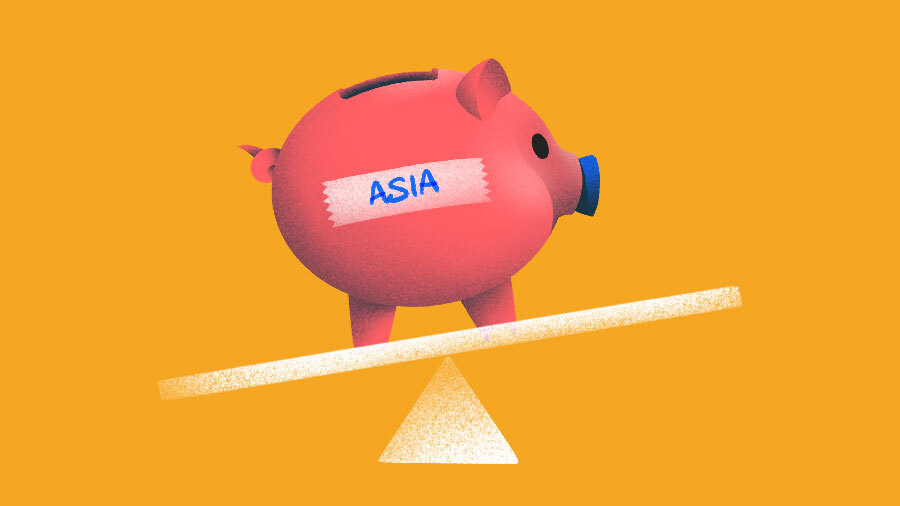
Stay up to date with recent funding rounds, acquisitions, and more with the Crunchbase Daily.










![Illustration of pandemic pet pampering. [Dom Guzman]](https://news.crunchbase.com/wp-content/uploads/2021/03/Pets-2-300x168.jpg)

67.1K Followers